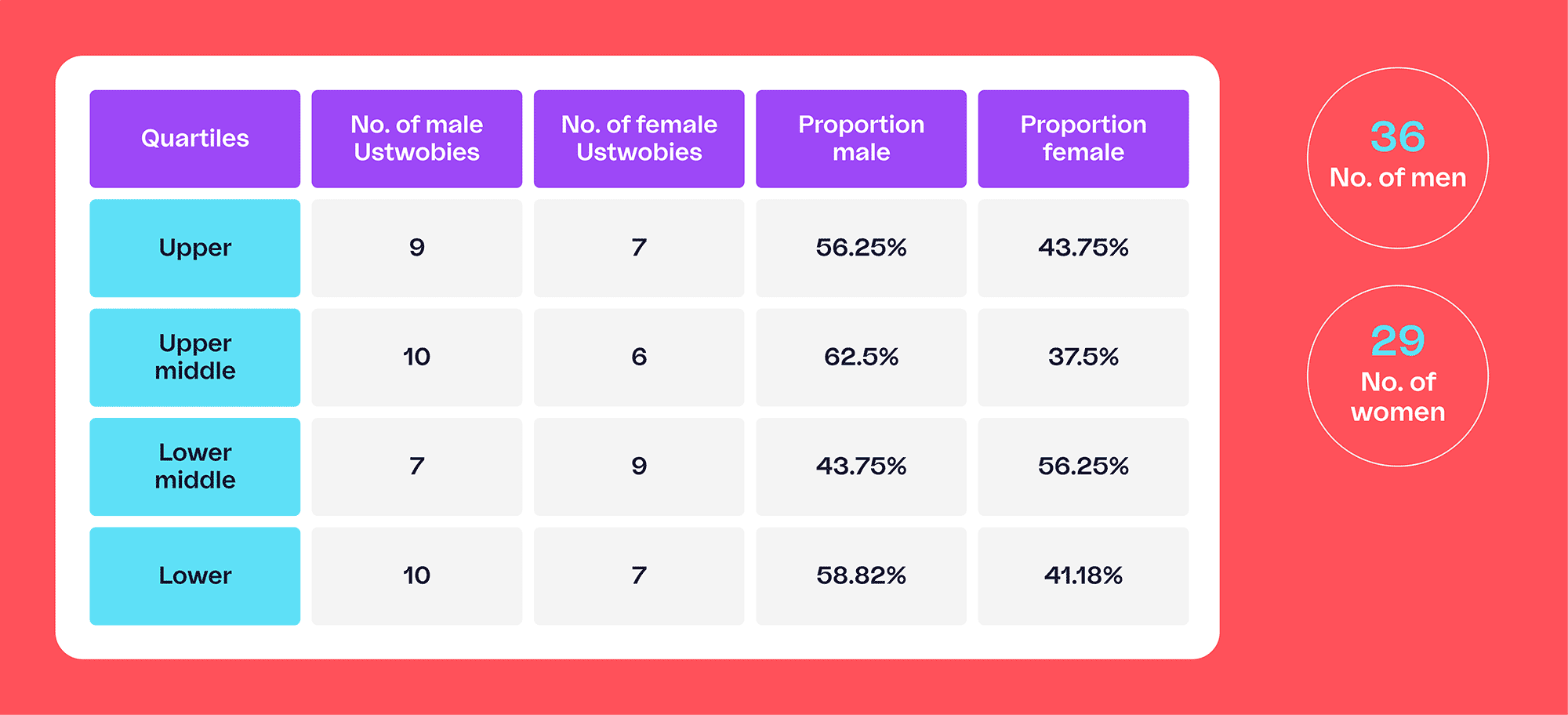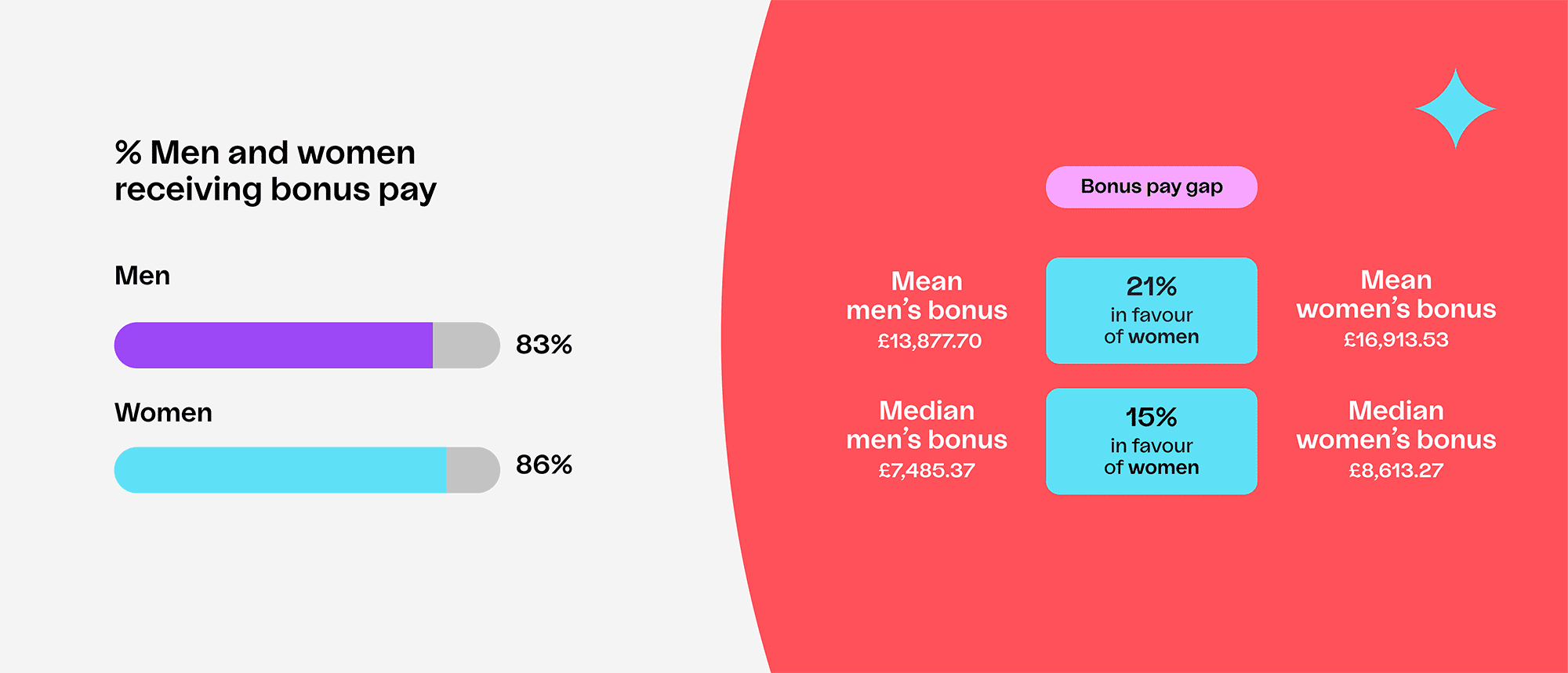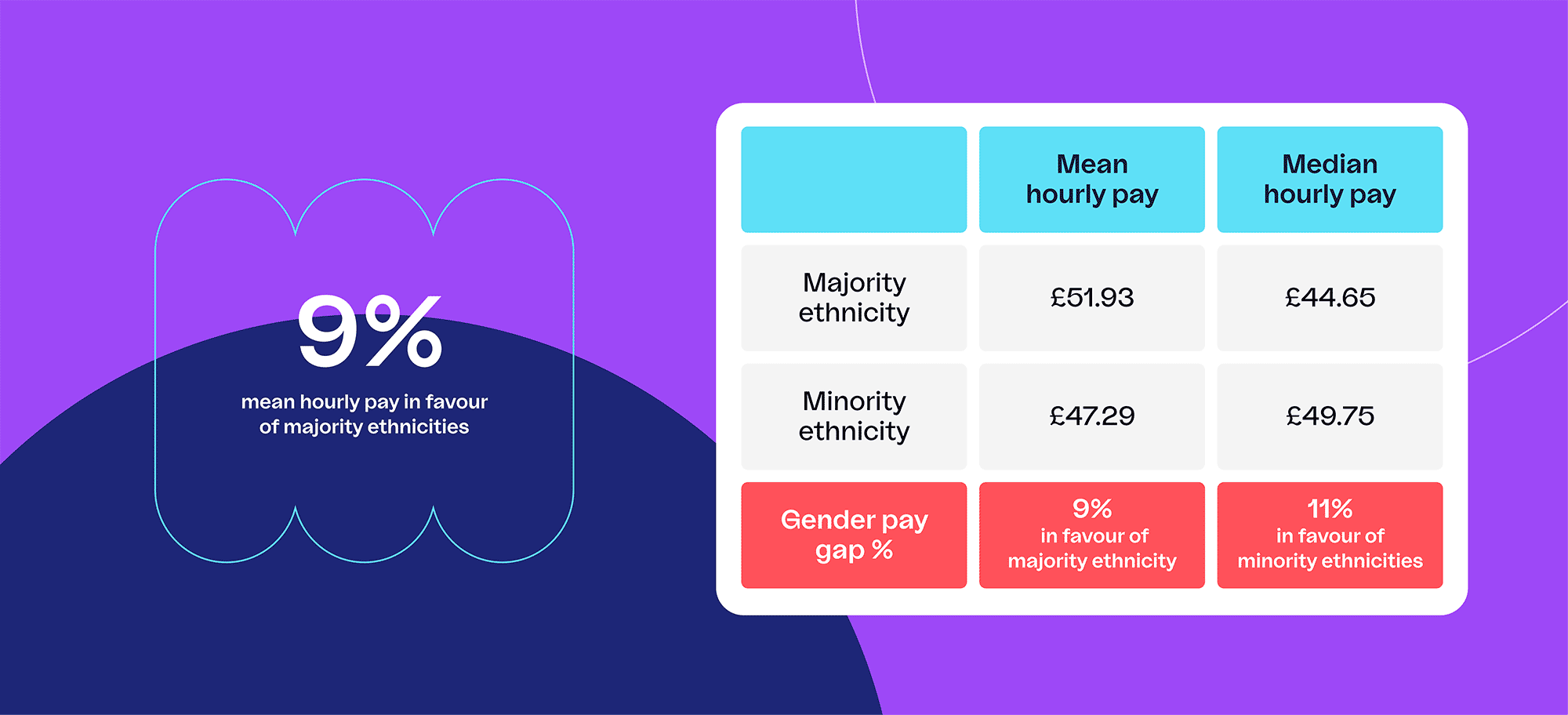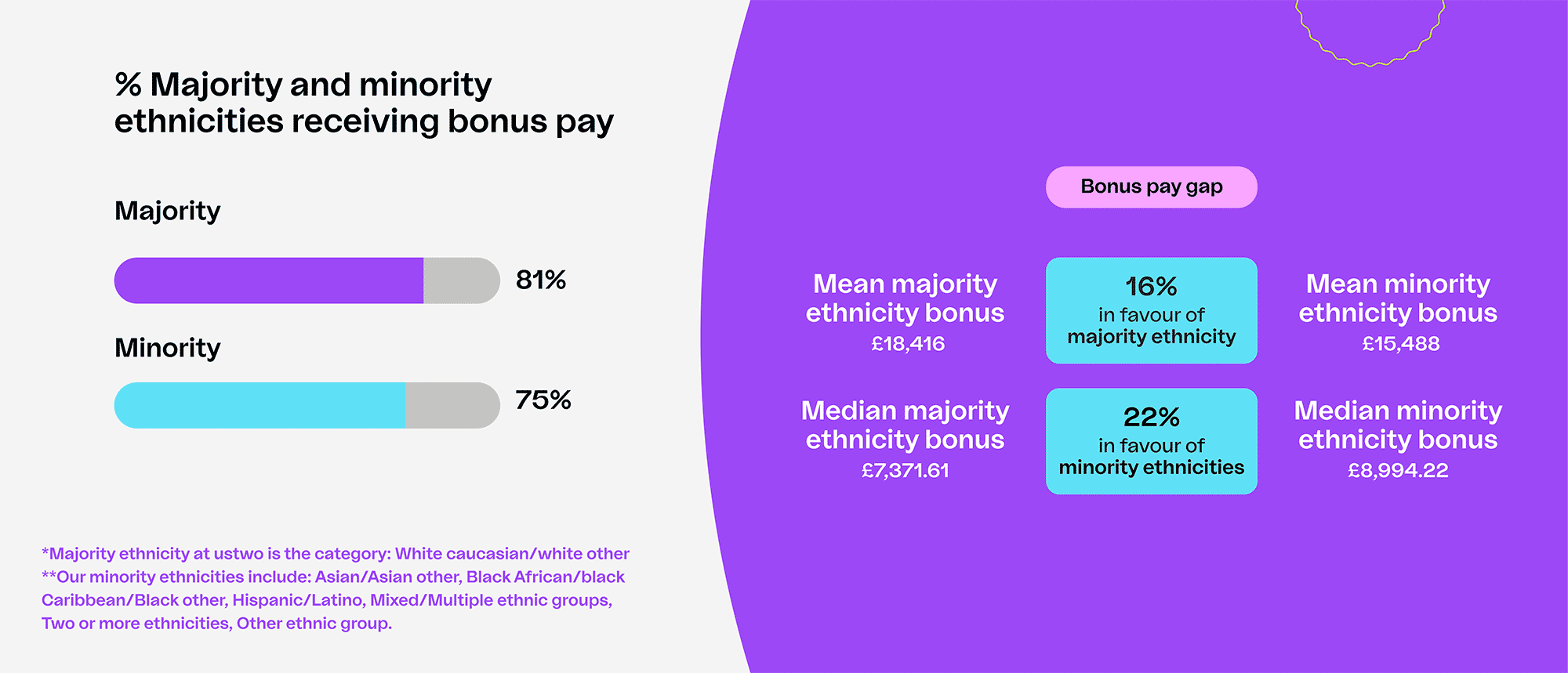We’ve been measuring and reporting our gender pay gap for seven years, but we’ve taken bigger steps towards transparency in recent years. This year, for the first time, we are also sharing our ethnicity pay gap.
2023 is the second consecutive year that we’ll voluntarily submit our gender pay gap data to the UK Government website. Reporting our gender pay gap and sharing salary bands publicly means we can continue our commitment to transparency. It also gives us deeper insight into life at ustwo.
The data



When reflecting on previous years’ data, something that strikes me is how our gender pay gap has fluctuated, yet consistently remained in favour of women for the last four years.
To understand why, it’s important to consider our gender split at ustwo London.
- We’ve had a female Managing Director for five years.
- We’ve retained female leaders in some of our executive roles for over four years.
- Our annual profit share is distributed according to each person’s base salary.
We know our gender pay gap is influenced by the majority of our highest-earning executives being women. But what would our gender pay gap look like if our Managing Director was male? Or if the majority of our executives were also male?
While we’re proud of our strong female leadership, it’s worth noting that our highest-earning quartiles still sway towards men, and our median salary gap is in favour of men. We know this is because our Tech team has some of the highest salary bands at ustwo, and is also a majority male team, which makes a big impact on the upper middle quartile.
Our data skews in both directions, which reveals areas we need to focus on to get close to a 0% pay gap.
Let’s talk about equity
Looking beyond our salary data, we’re also working to achieve equity in how ustwobies are compensated overall. The world is changing; the move to hybrid working and the wave of redundancies in tech have impacted how we think about our jobs in relation to the rest of our lives.
Here are some benefits we’ve introduced in the last year to support all ustwobies:
- Pregnancy loss leave
- Up to two weeks paid mental health leave
- Work remotely from anywhere for one month per year
Some long-standing benefits we offer are:
- Extended parental leave
- Child care vouchers
By making these benefits available to the people who need them, we hope to create an environment where all ustwobies can thrive.
Since our 2022 report, when we were fully remote, we’ve returned to one universal day in our studio for in-person collaboration. We continue to factor in different employee needs and experiences. For example, we’ve organised talks about how return to office affects people with childcare responsibilities to ensure equal understanding among all ustwobies.
Our ethnicity pay gap
Last year one of our goals was to report our ethnicity pay gap. In order to gather this data, we ran a report of all employees who have chosen to disclose their ethnicity in our HR system. Currently this is 76.5% of our London ustwobies. While it’s a good set of data to report from, it doesn’t give us the full picture of our studio.
Given that we’re reporting from a reduced data set this year, we can only share our mean and median hourly pay gap and bonus pay gap.
Ethnicity data


So what does the data tell us?
First of all, there is work to do to close the hourly average gap. In 2020, we revisited our salary bands to ensure our teams sit within them. Our salary bands are shared internally and externally. This is one step we’ve taken to reduce unfair imbalances. While our transparent salary bands ensure fair pay, we still need to employ a more diverse group of people across all levels at ustwo.
Second of all, what do we take from the median gap being in favour of minority ethnicity employees? With such a small data set, having several employees in leadership or principal level roles means that the median employee is likely to be a well-paid ustwobie. At first glance our median pay gap may look encouraging, but the reality is that just 24.5% of this data represents minority ethnicity employees from a reduced data set.
Improving our ethnicity data
We know that disclosing ethnicity data requires trust. By reporting on the data this year, we hope that more ustwobies will feel encouraged to share their ethnicity information. This will allow us to accurately report with a fuller data set, and take steps to address and close our ethnicity pay gap.
Goals for 2024
Looking towards the future, it’s important that we take action to close our gender and ethnicity pay gaps. Setting goals means we can hold ourselves accountable and make further progress by next year.
For 2023 we will:
- Work to narrow the gender pay gap between between mean and median hourly rates
- Market our tech roles to a wider talent pool to ensure gender and ethnic diversity
- Aim to receive 50% of job applications from minority ethnic communities
- Improve gender and ethnic distribution across all our roles and levels
- Support underrepresented communities within design, tech, strategy and product through partnerships
- Improve transparency around our interview process
- Build trust with ustwobies so that more data is shared within this process
We acknowledge that our ethnicity pay gap is not where it should be. The reality is that it might even be larger than we realise due to our incomplete data set. With that being said, we’re committed to giving all ustwobies equal attention and will continue to work on our goals this year.
